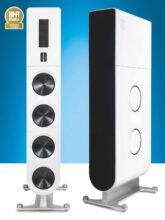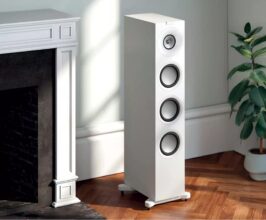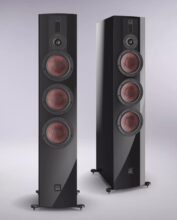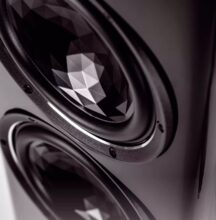Acoustic Energy AE520 Review
A full baffle covered from top to bottom with drivers: Here’s how Acoustic Energy is reinventing itself. With a new focus on carbon for the cones, can the AE520 spark excitement among HiFi fans?
by Stefan Schickedanz
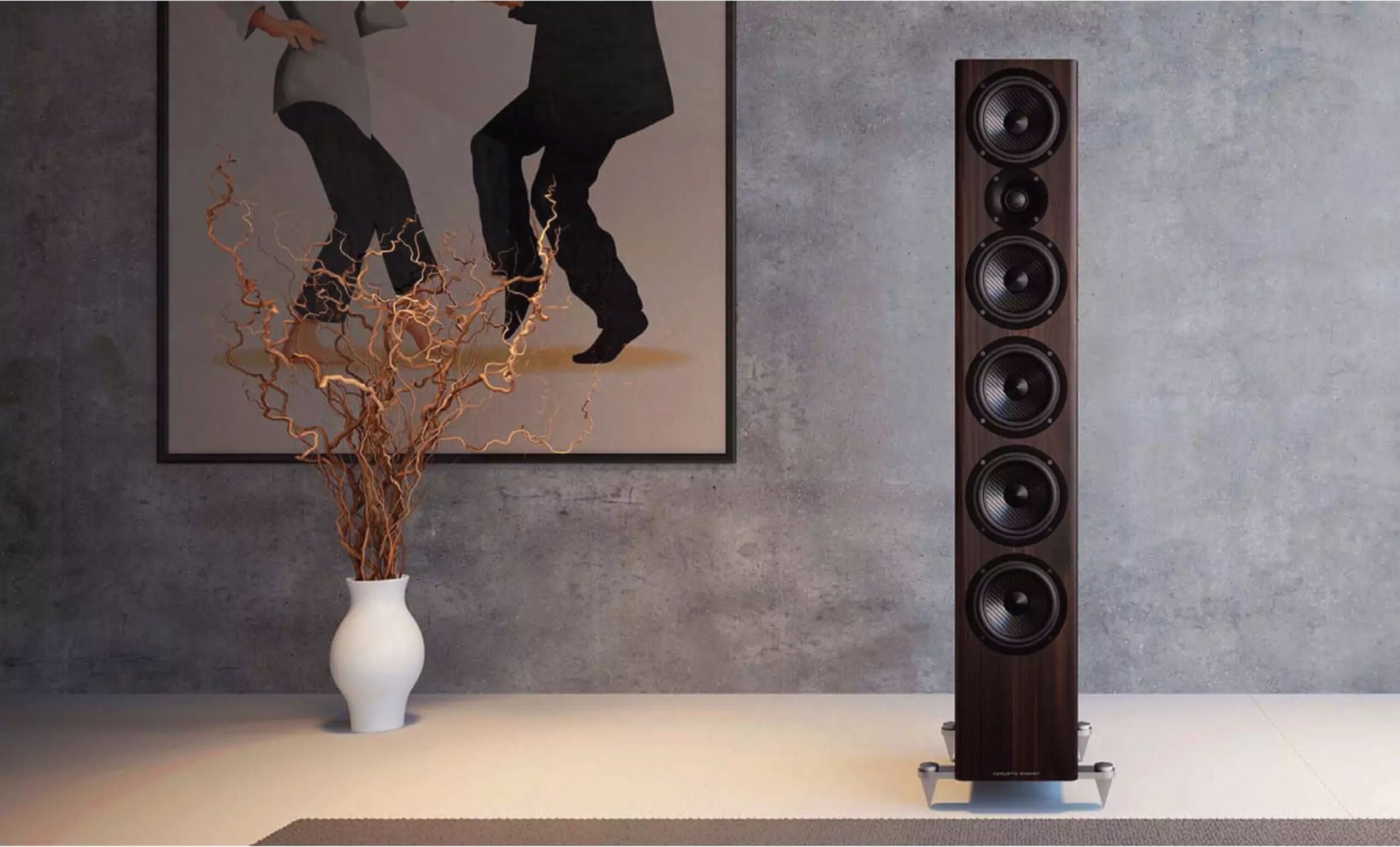
In Germany, phasing out coal is a major topic, as they plan to rely on wind and solar power. Meanwhile, China continues to build new coal-fired power plants, and the British are not particularly invested in decarbonization—at least when it comes to “acoustic energy.” Acoustic Energy’s AE520 uses carbon fiber in its low-, mid-, and high-frequency drivers. These 113 cm-tall floorstanding speakers feature a front panel fully loaded with drivers, and their slim design—only 18.5 cm wide—allows them to move a lot of air.
This impressive array of drivers actually surpasses the flagship model of the 500 Series in terms of diaphragm area. The AE509 has just one tweeter and two 12.5 cm mid-woofers. However, the AE520 adds three more 12.5 cm woofers for extra bass support. Because of this, the two upper cones can concentrate solely on midrange frequencies, covering 373 Hz to 2,800 Hz. This prevents large cone excursions in the mids—something small drivers typically need to handle bass frequencies.
Why carbon fiber? It’s more flexible than aluminum—another material Acoustic Energy has used—and it offers high tensile strength with excellent damping. Resonances don’t travel far in these ultra-thin diaphragms, and the low weight helps them respond quickly to rapid sound impulses.
Uncured Carbon Fiber
Acoustic Energy uses uncured woven carbon-fiber bundles for the midrange drivers. This approach gives the driver cones favorable bending characteristics and avoids abrupt beaming effects. By contrast, the tweeter dome needs more rigidity. Here, countless parallel fibers are bonded with resin—similar to a high-performance bike frame or Formula 1 monocoque—forming a stiff, acoustically dense dome.
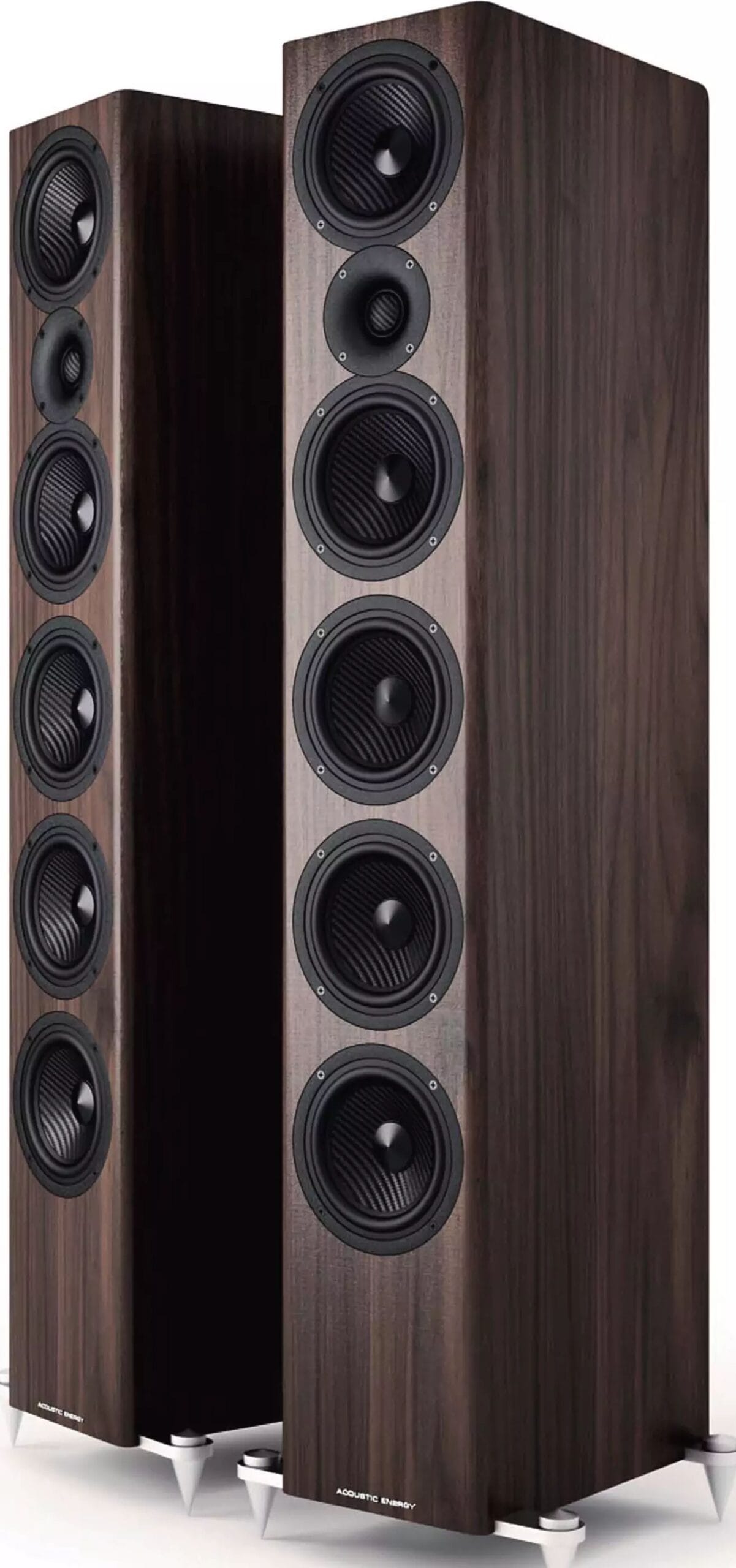
All of the AE 520’s diaphragms are carbon fiber, including the midranges, woofers, and tweeter dome.
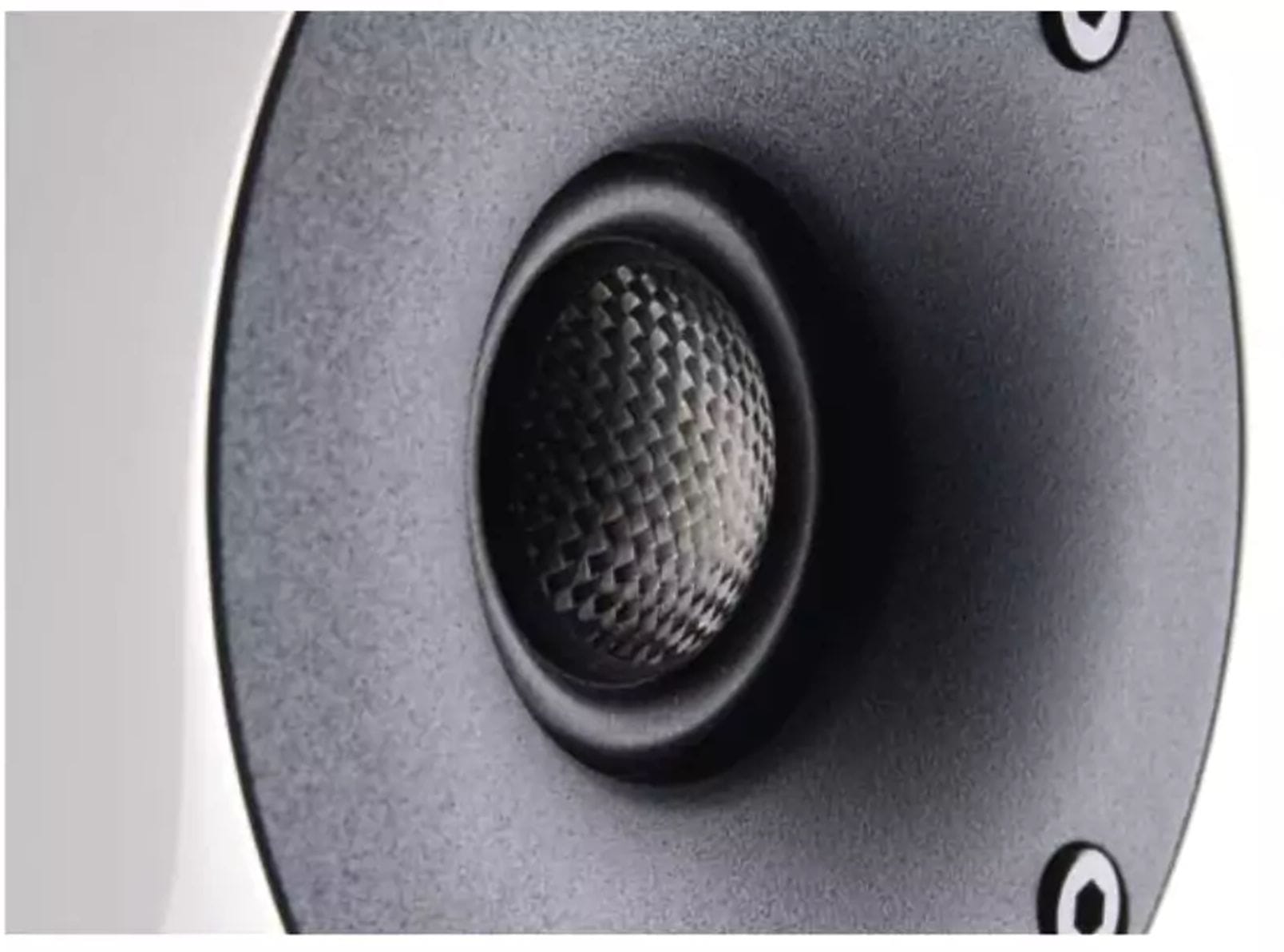
The 2.5 cm carbon-fiber tweeter includes a waveguide to improve dispersion. The bass reflex port is located on the back.

The die-cast aluminum waveguide helps align the tweeter’s vertical directivity with that of the two midrange drivers, arranged in a D’Appolito-style layout, just like in the AE 509. This design targets fewer reflections from floor and ceiling, creating a smoother vertical spread at typical seated listening heights.
Separate Chambers
Each midrange driver has a 3.5 cm voice coil for minimal thermal compression and high dynamic range. They sit in their own enclosure sections, acoustically isolated from the woofers. The bass-reflex cabinet weighs 30 kg and has a timeless look. Acoustic Energy offers it in high-gloss white, high-gloss black, or American walnut veneer, now with much higher-quality finishes than a decade ago.
A pair of “Energy bars” uniting a dozen drivers—yet needing surprisingly little power.
The substantial weight comes partly from Resonance Suppression Composite (RSC). This build uses two MDF layers—0.9 cm on the outside, 0.6 cm on the inside—bonded with a 3 mm bitumen layer in between. The result is a very inert structure, resting on aluminum supports with adjustable aluminum spikes.
Ready for a Dozen
We initially hoped to pair these speakers with the Naim Uniti Atom, which would have matched them nicely in both looks and price. Instead, we tested them with several different amplifiers, from the $10,450 Line RG10 MK5 to the much cheaper Harman Kardon Citation Amp. Surprisingly, the AE 520’s dozen drivers still delivered “good vibrations” even with a lower-priced amp.
Overall, the AE 520 demonstrated the classic British sound signature—highly homogeneous, with vocals sounding authentic and substantial. While it remains neutral, it tends slightly toward a warm, silky character. Imaging stability was outstanding, though up-close listening could feel somewhat flat. Adjusting toe-in sharpens the focus. Moving a bit farther away from the speakers, however, gave us a notably expansive, evenly spread soundstage. The AE 520 handles transients especially well in the midrange, and it delivers impressive, full bass for a speaker this slim—though not in an overly “dry” fashion.
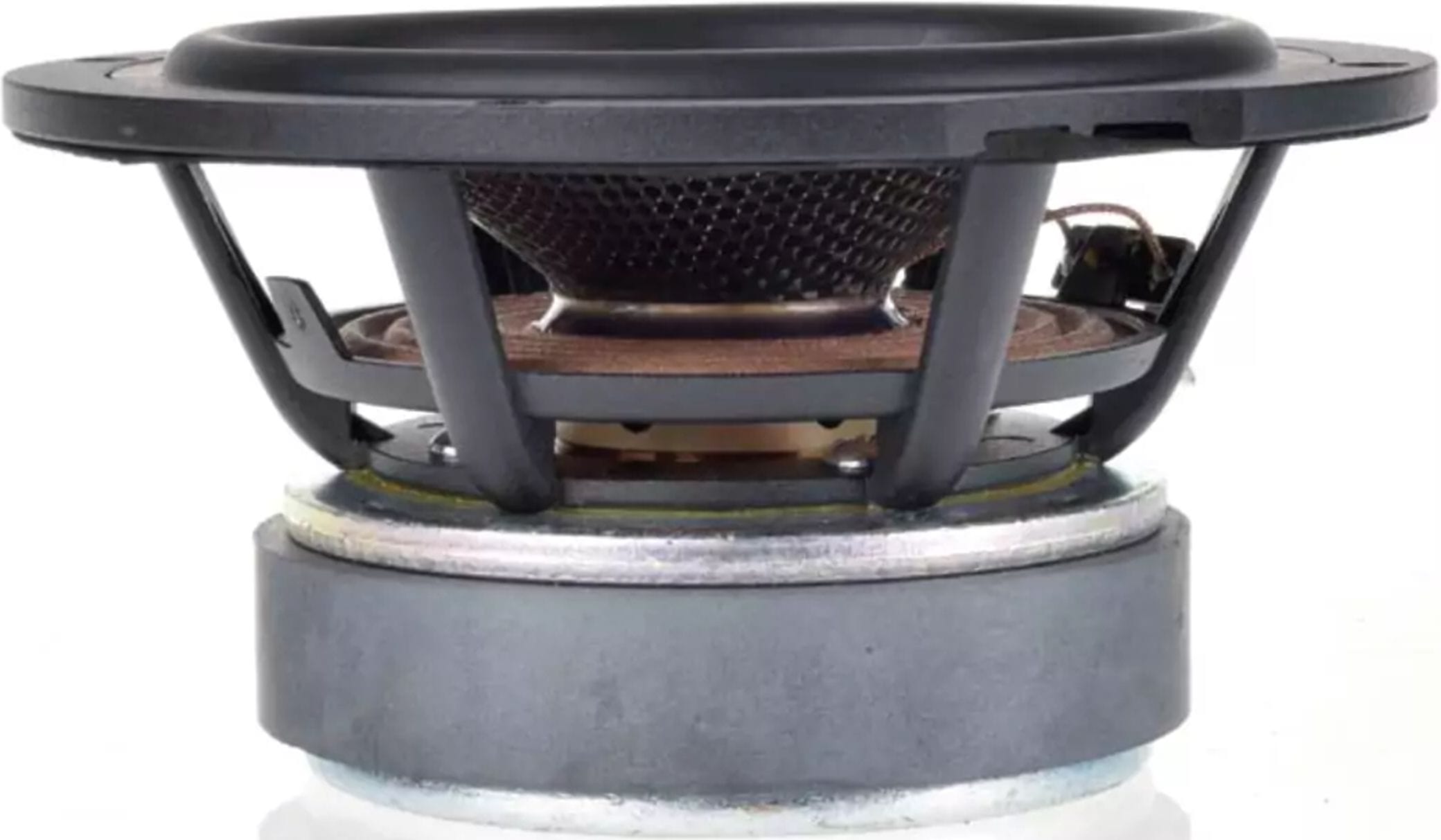
The two 12.5 cm carbon-fiber midrange drivers are also found in the smaller AE 509 floorstander, which uses a simpler 2-way configuration.
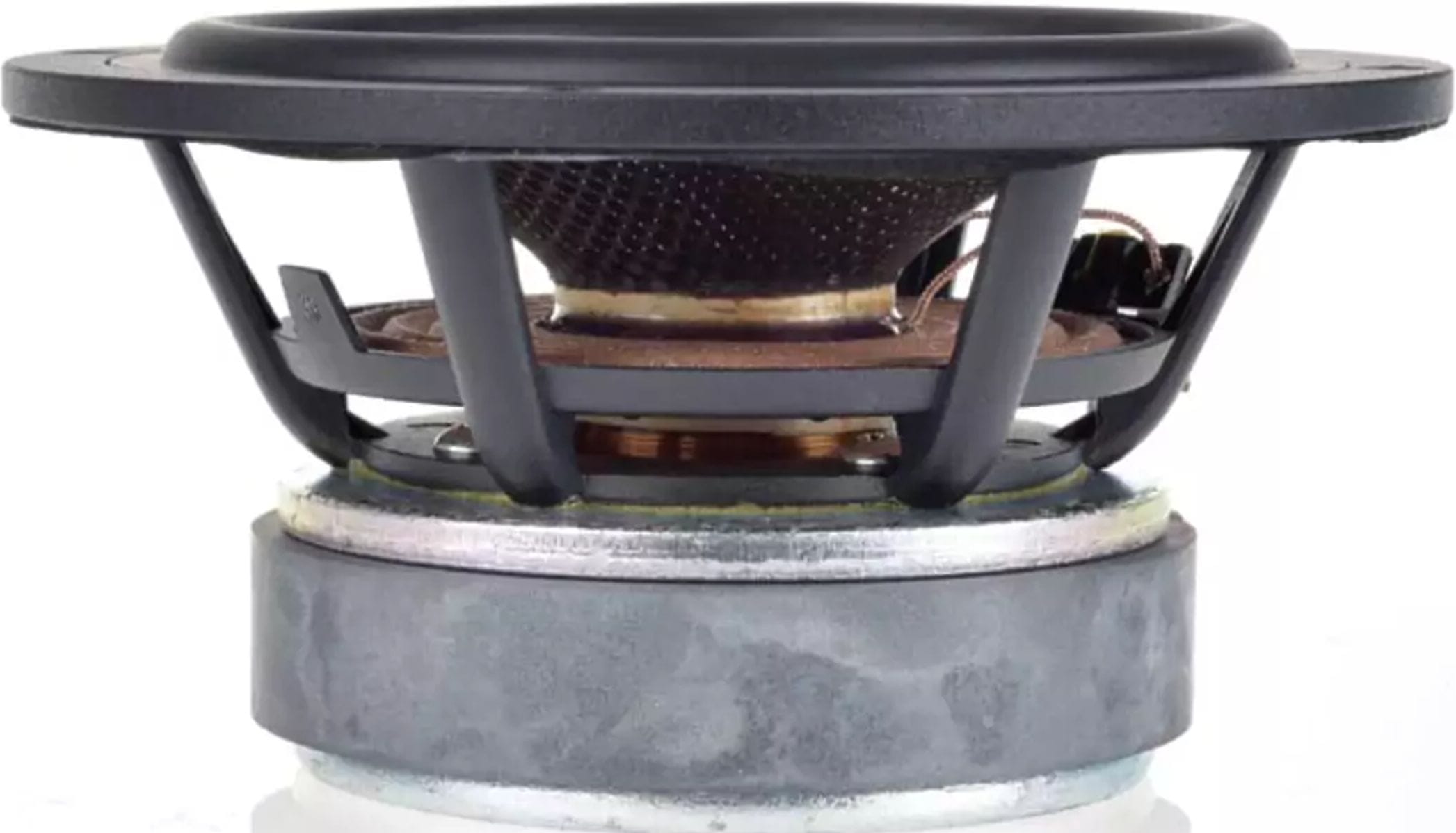
Though they share the same 12.5 cm diameter, the AE 520’s dedicated woofers have heavier diaphragms and allow more excursion than the midrange units.
Interferences Kept Out
The 3-way crossover is split across two separate boards to isolate the high-current bass section from the more sensitive mid/high components. Polypropylene capacitors and air-core coils appear where they matter most.
Keeping Drivers Apart
To avoid direct interference, Acoustic Energy places the two midrange drivers in their own compartments.
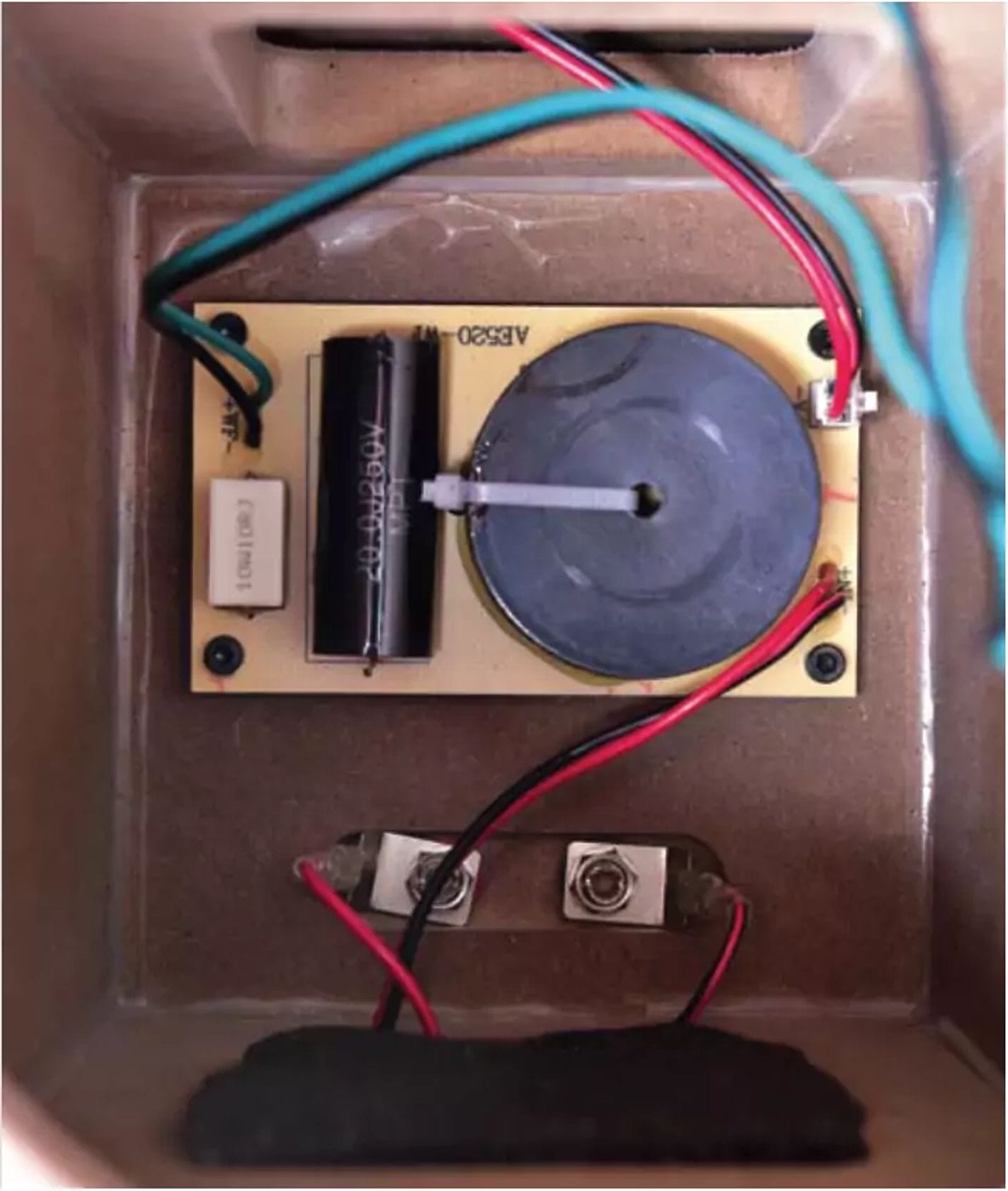
Specs
Acoustic Energy AE 520
Dimensions (W × H × D): 18.5 × 113 × 32 cm
Weight: 30 kg
Measurement Charts
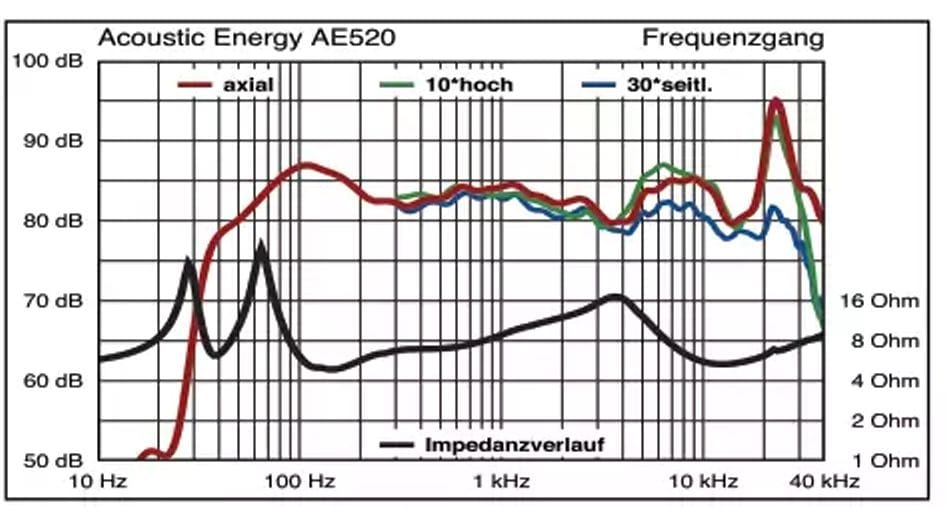
Frequency Response & Impedance Slightly more uneven than average, but balanced off-axis with generous upper bass.
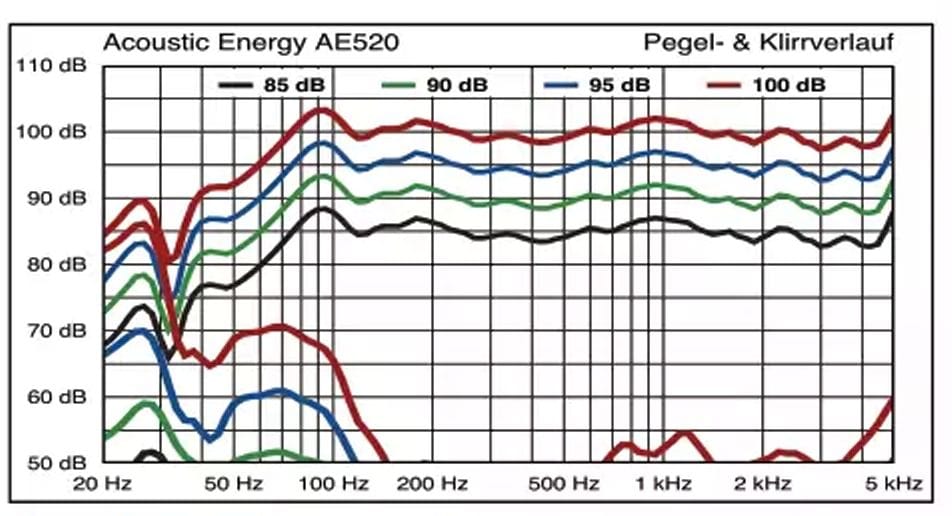
Output Level & Distortion (85–100 dB SPL) Very little distortion in the midrange, even at 100 dB. Bass remains clean at 90 dB.
Lower cutoff frequency (-3 dB/-6 dB): 51/38 Hz
Maximum SPL: 107 dB
Amplifier Compatibility
Normal voltage and low current demand, making it easy on most amps. Voltage: 13.6 V, Impedance Range (Δ): 4.9–18 Ω, Current Requirement: 2.8 A
Room Setup Tips
Angle the speakers for better focus; more distance improves imaging. Listening distance can be 1–5 m, wall distance 0–1.5 m, and room reverberation time 0.2–0.8 s for best results.
Verdict
Ratings (Approx. 10-Point Scale)
Naturalness: 10 / 10
Detail Resolution: 9 / 10
Dynamic Headroom: 8 / 10
Bass Quality: 8 / 10
Imaging: 10 / 10
Additional Scores
Measurements: 8 / 10
Practicality: 6 / 10
Build Quality (Value): 7 / 10
Stereoplay Test Rating
Sound: “absolute top class” → around 9 / 10
Overall Rating: around 8 / 10 (81 points originally)
Price/Performance: “very good”



